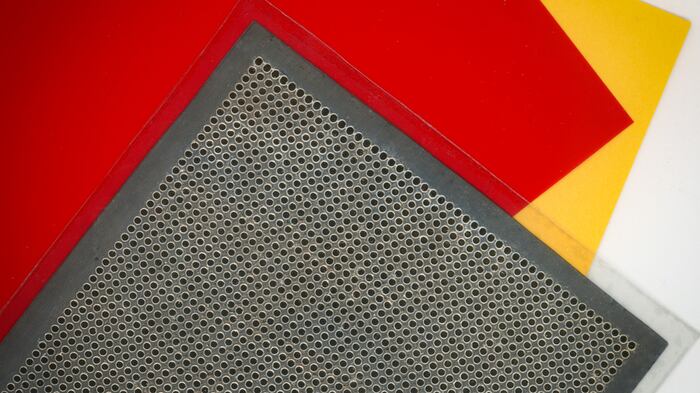Good news, audiophiles. Gone are the days of bulky hi-fi systems and cumbersome headphones. That’s because MIT engineers have developed a new loudspeaker that’s as thin as paper and produces high-quality sound.
In a paper published on Tuesday in the journal IEEE Transactions of Industrial Electronics, researchers unveiled the paper-thin device that weighs roughly the same as a dime, and can be used to cover surfaces like walls and ceilings. The loudspeaker also uses a fraction of the energy a typical speaker requires, while producing comparable sound quality.
“It feels remarkable to take what looks like a slender sheet of paper, attach two clips to it, plug it into the headphone port of your computer, and start hearing sounds emanating from it,” Vladimir Bulović, director of MIT.nano and co-author of the paper, said in a press release. “It can be used anywhere. One just needs a smidgeon of electrical power to run it.”
The new device is a rethinking of traditional loudspeakers, which typically work using an electric current that goes through a coil of wire. This produces a magnetic field that moves a speaker cone—usually made of paper or plastic—that produces sound.
Instead, the new speaker utilizes tiny, vibrating domes the width of a strand of hair. Each dome is a “single sound-generation unit,” according to the press release. On its own, a dome doesn’t produce much sound. But when thousands of them are sandwiched between a thin sheet of lightweight plastic and a sheet of piezoelectric material called PVDF, they create a paper-thin and energy-efficient loudspeaker.
In fact, the device only requires roughly 100 milliwatts of power per square meter of speaker area to work—which is incredibly efficient when compared to the one watt of power per square meter of speaker area a typical loudspeaker requires. Researchers also say it produces a comparable amount of sound too.
While you could easily use the loudspeaker to wallpaper your room so you can blast Harry Styles’ latest to your heart’s content, the device’s creators believe that it has a wide-range of other commercial applications including noise cancellation in loud environments like airplane cockpits. It could also be used to create a fully surround sound experience in places like movie theaters and theme parks.
“This is a very simple, straightforward process. It would allow us to produce these loudspeakers in a high-throughput fashion if we integrate it with a roll-to-roll process in the future,” Jinchi Han, a postdoc at MIT’s Organic and Nanostructured Electronics Laboratory and senior author of the paper, said in the release. “That means it could be fabricated in large amounts, like wallpaper to cover walls, cars, or aircraft interiors.”
In a fascinating—if a bit creepy—twist, the study’s authors also said that the device can be used as an ultrasound to detect where people are in a room, much in the same way bats use echolocation. It could also be used to help stir chemicals when the device is immersed in liquid. Of course, this will require the researchers to build off of their latest creation—but the possibilities are big.
“We have the ability to precisely generate mechanical motion of air by activating a physical surface that is scalable,” Bulović said in the release. “The options of how to use this technology are limitless.”







